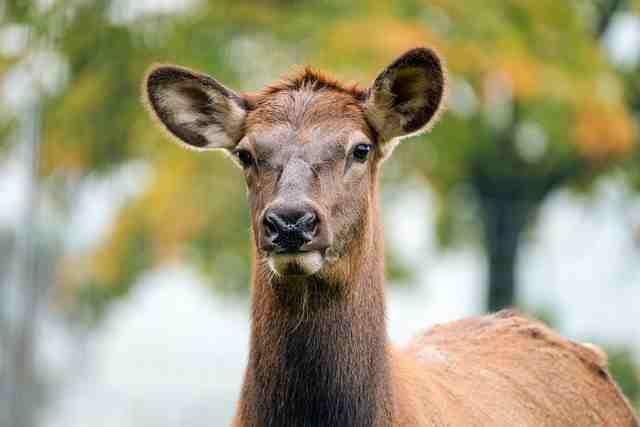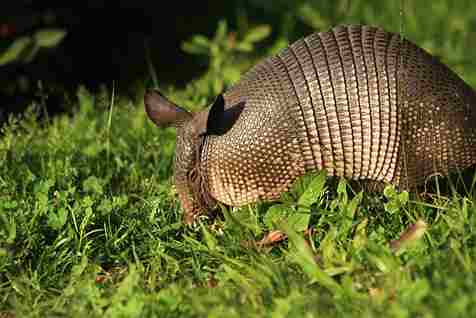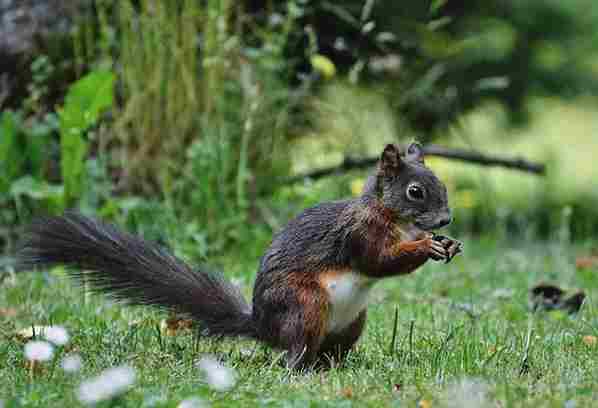Do Deer Make Noise? (EXPLAINED)
Whether you encounter them in the woods or in the farm, hearing a deer make any type of sound might seem awkward since we often like to associate them with silence. But is it really true they make noise, and if so, what type of sound do they produce?
So, do deer make noise?
Yes, deer make noise! They produce different types of noise, such as a grunt, bleat, or roar. Interestingly, each of these sounds or signals is used to communicate a different meaning.
In this write-up, we will look at the different sounds made by deer and why they make them. We will focus on particular times, such as mating seasons, when they feel threatened, and when seeing food or exploring a new environment.

Different Sounds Made By A Deer
Deer are surprisingly vocal creatures and use different sounds to communicate with each other. Let’s explore some of these sounds.
Grunt
Perhaps the most common sound made by a deer is a grunt. Deer, particularly bucks, use grunts to communicate with other deer. A grunt is made from the bottom of the throat and can be heard over relatively long distances. It can mean different things depending on the intensity and frequency, but it often signifies curiosity, contentment, or a warning signal.
Some deer use a deep grunt sound to announce their presence to other deer in the area. Hunters often capitalize on this by using deer calls that sound like a grunt to attract more deer to an area.
Generally, the gunt made by male bucks or stags is much deeper than those made by females. They (males) may also use it to assert dominance.
Snort
A snort is a warning sound. It is typically produced by dominant bucks to wade off or threaten other deer. In other words, it is used to establish dominance or show aggression. It is also referred to as a huffing or blowing sound.
To snort, a deer will forcefully blow air out of its nose, then inhale with a wheeze. It might stomp its feet at the same time.
If you hear a snort-wheeze in the woods, chances are there’s a territorial dispute happening nearby.
Sometimes a deer can snort at you if it sees you as a threat. When this happens, try to avoid making any eye contact with it and slowly back away.
Bleat
The bleat is a call peculiar to does (female deer) and fawns (young deer) and usually sound softer and more melodic. It is often used by does to call their fawns and by fawns when they’re lost or in danger.
Does also bleat when they are in heat (estrus) to attract a buck nearby.
A fawn’s bleat sounds like a squeaking noise.
Roar
Lastly, we have the roar, which is less common but still sounds interesting. It is only produced by bucks and used during the rut (mating season) to assert dominance and attract mates.
The roar indicates a high level of arousal and aggression, signaling to other bucks that they mean business.
Sniff
Deer can also make sniffing sounds when they are exploring their environment or looking for food.
This is usually very subtle, so you may not be able to hear it unless you’re very close, and the deer is probably not aware you’re around or doesn’t see you as a threat.
As you would expect, deer sniff with their nose. Besides food, they can also detect potential predators and other deer using their noses.
Rattle
Deer typically make rattling noises with their antlers when they clash during the rutting season.
During this time, it is common for deer to fight for dominance. And this is usually done by intertwining their antlers, locking their heads, and pushing each other around.
The rattling noise comes from the contact or clashing of the antlers. You’re most likely to hear it many times during the mating season.
Why Deer Make Noises
Just as humans use language to communicate, deer use various sounds to interact with each other. This is crucial for their social structure and survival.
Asserting dominance: As mentioned earlier, bucks often use noises like grunts and roars to assert their dominance, especially during ruts. This enables them to establish a hierarchy within the deer population and attract mates.
To alert other deer of danger: Deer are prey animals, and, as such, they need an effective way to alert each other of potential danger. They do this through alarm calls like the snort or distress bleats of a fawn, which can send a deer herd into high alert. This helps to keep the herd safe from predators.
To communicate with their offspring: Does use specific calls like the maternal bleat to communicate with their fawns and keep them together. This is extremely important, especially in dense woodland where visibility is limited.
Do Deer Make Noise At Night?
Deer are crepuscular creatures, meaning they are most active during twilight hours — dawn and dusk. Sometimes, their activity often extends into the night, especially during the rutting season when bucks are actively seeking mates. They tend to be very vocal throughout these periods, so it’s possible to hear them make different sounds.
Do Deer Make Noise When Hurt?
Yes, deer can make noise when they’re hurt. A deer in distress often bleats or cries out, similar to a fawn’s distress call. This is a high-pitched sound that indicates pain or discomfort. It’s a distressing sound and serves to alert other deer to potential danger or distress.
The intensity of the sound often corresponds with the level of distress the animal is experiencing.
Do Deer Make Noise When Scared?
When deer sense danger or become scared, they let out a sharp snorting sound, also known as a ‘blow’ or ‘snort.’
This alarm call is meant to alert other deer in the area of the presence of a potential predator or threat. It usually echoes through the forest, causing all deer within hearing range to become alert and wary.
A deer’s snort is often accompanied by the stamping of its feet and a high, erect tail, which are additional visual signals of danger.
Do Deer Make Noise When Walking?
Deer are generally quiet and stealthy walkers, thanks to their soft hooves and agile bodies.
Their quiet movement allows them to navigate their habitat while minimizing the risk of being detected by predators.
However, when startled or on the run, their movement can create a rustling sound underbrush.
Deer are also capable of producing a stomping sound with their hooves, which serves as a warning signal to other deer.
Do Baby Deer Make Noise?
Yes, baby deer, or fawns, make noises to communicate, especially with their mothers. Their most common sound is a bleat, a high-pitched call used when they are lost or in danger.
They also mew and whine, particularly when they’re hungry or in need of attention.
How to Hear Deer Noise
Want to hear these deer sounds for yourself? There are numerous recorded videos online of deer making different sounds. Here’s an example:
It’s also possible to hear these sounds in person during a hunt when you’re in the woods or in your yard (if you’re lucky). Just be patient and attentive when you spot the deer, especially in its natural habitat.
Other Related Questions
Do Female Deer Make Noise?
Female deer, or does, are also vocal like the males. They typically bleat to communicate with their fawns or accept a buck’s call during the rutting season. When perceiving danger, a doe will make a sharp snort or blow to warn other deer around.
Do All Deer Sound the Same?
While all deer make noise, the sounds usually vary with each species. For instance, a mule deer’s bark-like alarm call differs significantly from a white-tailed deer’s snort.
Do Deer Make Noise Like Cows?
While deer make different kinds of noise, none of them closely resembles the mooing of a cow. So, even though both animals make noise, they do not sound the same.
Do Deer Make Noise When Giving Birth?
During the actual process of giving birth, does tend to be quiet to avoid attracting predators to their vulnerable fawn. However, immediately after birth, they begin to communicate with their newborns through soft grunts, bleats, and mews.
Do Deer Make Noise When Walking?
Deer are generally silent when walking, with their soft hooves making very little noise on the forest floor. However, when they get startled or run, their movement can create noticeable sounds.
Do Mule Deer Make Noise?
Mule deer do make noise, although they are generally less vocal than white-tailed deer.
Do Deer Make Noise When Dying?
Yes, similar to when they’re hurt, deer can make distressing noises when they’re dying. This typically sounds like a series of high-pitched bleats or cries. It’s an instinctual behavior meant to alert other deer of imminent danger.
Conclusion: Do Deer Make Noise?
In the end, the sounds made by deer are not just noise but meaningful communication, each with its unique meaning and purpose. From asserting dominance to warning others of potential danger or communicating with their offspring, these vocalizations are integral to their social structure and survival.
However, understanding deer communication isn’t just about the sounds they make. It also involves observing their body language.
Other interesting articles:






